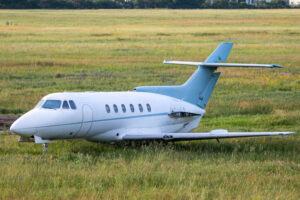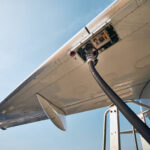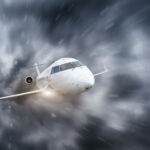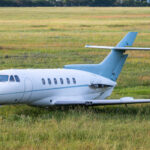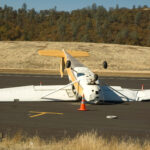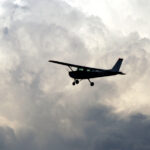Classes of Fire and Portable Fire Extinguishers
When you’re flying, safety is not just a priority—it’s a necessity. One critical but often overlooked safety tool onboard is the portable fire extinguisher. While rare, onboard fires represent some of the most dangerous scenarios a pilot might face. Knowing the types of fire extinguishers, the classes of fire they target, and how to use them effectively can make all the difference in ensuring a safe outcome.
Understanding Classes of Fire
Fires are categorized into specific classes based on the type of material that’s burning. Each class requires a different approach to extinguish:
- Class A: Fires involving ordinary combustible materials like wood, paper, or fabric.
- Class B: Fires fueled by flammable liquids such as gasoline, oil, or jet fuel.
- Class C: Fires involving electrical equipment like wiring, circuit breakers, or avionics systems.
- Class D: Fires involving combustible metals such as magnesium, titanium, or aluminum in powdered form.
- Class K: Fires caused by cooking oils or fats; these are more relevant to catering facilities, but they’re worth noting for ground operations.
For pilots, Class A, B, and C fires are the most common to address onboard an aircraft. However, understanding all fire classes helps ensure you’re prepared for any scenario.
Types of Portable Fire Extinguishers Found in Aviation
Aircraft fire extinguishers are specifically designed to handle potential in-flight and post-flight fire risks. Let’s take a closer look at the common types:
- Water Extinguishers
- Best for Class A fires.
- These extinguishers cool the burning material and are highly effective for ordinary combustible items like seat cushions or carpet fires.
- Be cautious: Never use a water extinguisher on electrical or flammable liquid fires.
- Carbon Dioxide (CO₂) Extinguishers
- Designed for Class B and Class C fires.
- CO₂ extinguishers smother flames by displacing oxygen, effectively cutting off the fire’s fuel source.
- Their non-conductive nature makes them safe for use on electrical fires, but use them in well-ventilated areas to avoid asphyxiation.
- Halon Extinguishers
- Highly effective for Class A, B, and C fires.
- Halon is the most commonly used extinguisher type in aviation. It interrupts the chemical reaction of the fire without leaving a residue, making it safe for sensitive avionics and electronics.
- However, their environmental impact has led to restrictions and the development of alternative agents such as Halotron.
- Dry Chemical Extinguishers
- Can cover Class A, B, C, or D fires, depending on the specific agent.
- These work by creating a layer of fine powder over the fire, separating the fuel from oxygen and interrupting the chemical reaction.
- While versatile, dry extinguishers leave a significant residue that can damage avionics or electrical systems, making them less ideal for cockpit or cabin use.
- Metal-Based Extinguishers
- Specifically for Class D fires involving combustible metals like magnesium or aluminum.
- These extinguishers use specialized agents that form a crust over the fire, preventing it from spreading. While they’re rarely needed in flight, they may be present in hangars or repair facilities.
Practical Tips for Pilots
Having the right extinguisher onboard and knowing how to use it are vital steps in fire preparedness. Follow these tips to enhance your readiness:
- Choose the Right Extinguisher: Aircraft must carry extinguishers certified for aviation use, typically Halon or CO₂. Make sure the extinguisher is appropriate for the fire hazards specific to your aircraft type and operation.
- Check Pressure Gauge Regularly: Inspect the extinguisher’s pressure gauge before every flight. Low pressure can render it useless in an emergency.
- Secure Properly: Ensure the extinguishers are easily accessible but securely fastened to avoid shifting or damage during turbulence.
- Know the PASS Method: Train yourself and your crew on the PASS (Pull, Aim, Squeeze, Sweep) technique:
- Pull the pin to activate the extinguisher.
- Aim the nozzle at the base of the fire.
- Squeeze the handle to release the agent.
- Sweep from side to side to cover the fire effectively.
- Be Aware of Residual Hazards: After extinguishing the fire, monitor for reignition and be prepared to take additional action if necessary.
- Replace Immediately After Use: Any discharged extinguisher, even partially, must be replaced or refilled before the next flight.
Key Points to Remember
Here’s a quick summary for Part 135 pilots:
- Carry appropriate extinguishers based on the risk of Class A, B, and C fires.
- Halon is the aviation standard, but be mindful of alternatives like Halotron.
- Inspect and maintain extinguishers as part of your preflight routine.
- Train for quick deployment using the PASS method.
- Never use the wrong extinguisher; for example, avoid water on electrical or fuel fires.
Preparing for the Unexpected
The best fire extinguisher is one you never have to use. However, unpredictability comes with the territory. A well-maintained, correctly chosen portable fire extinguisher and proper training can transform a potential disaster into a manageable situation. Remember, practice and preparation save lives—not just your own, but also your passengers’ and crew’s.
RELATED CTS TRAINING




